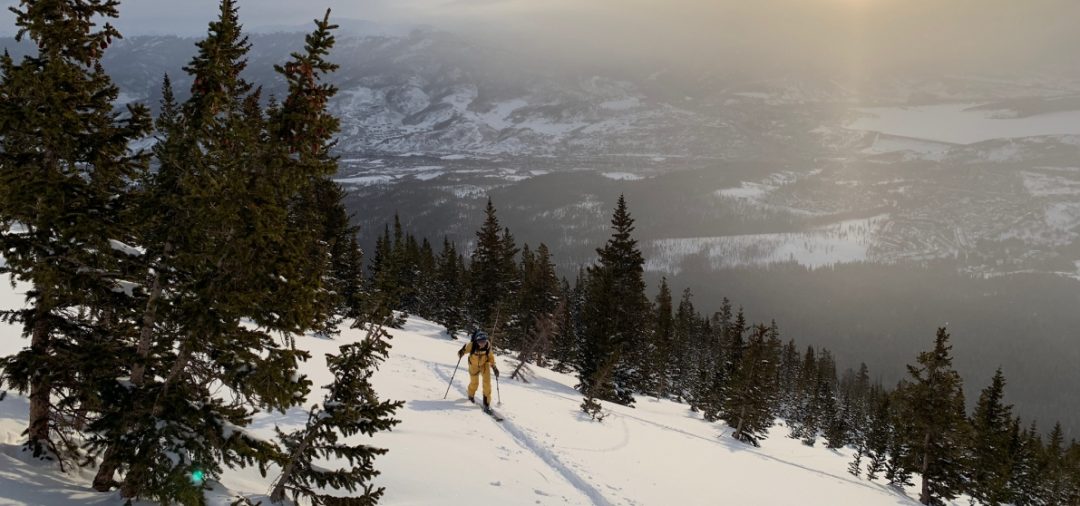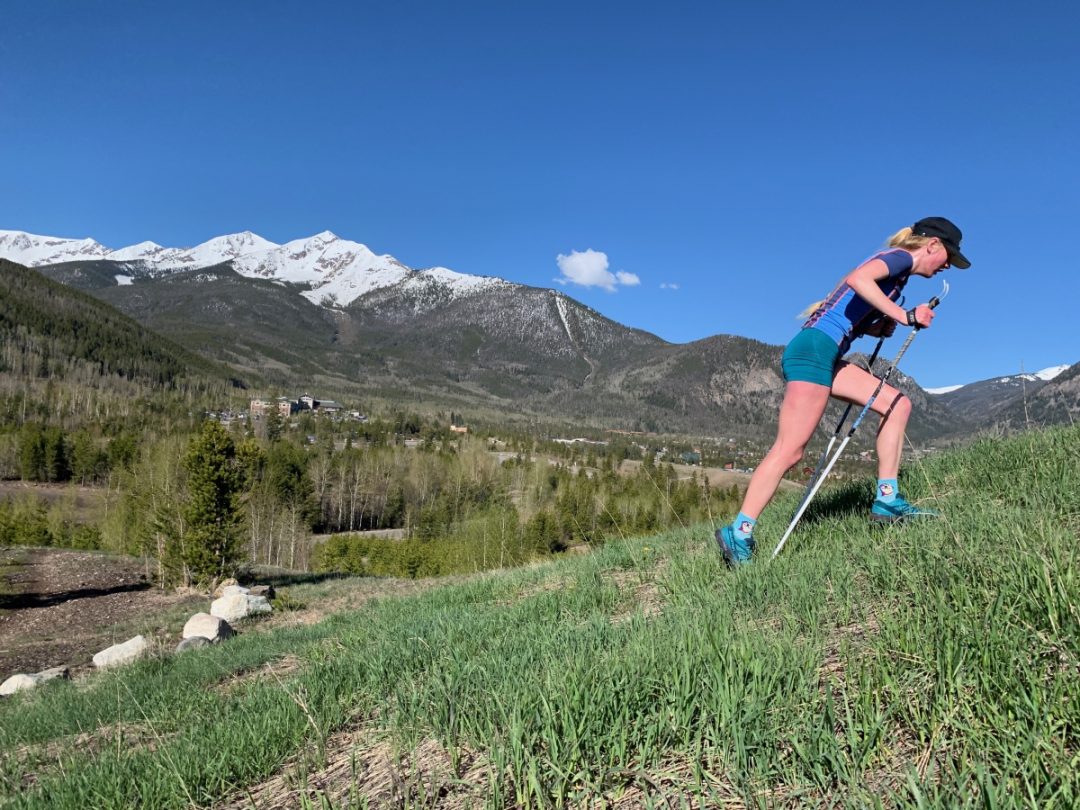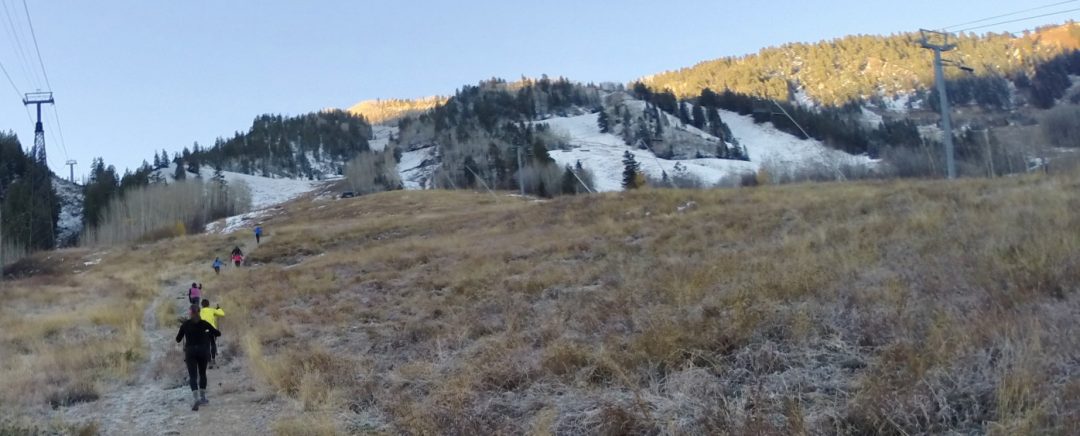USSMA Coach Joe Howdyshell tells how to start the ski touring season strong
We’ve all been there: halfway up the skin track on day one of ski touring season, breath chugging, heart beating like butterfly wings, legs screaming ‘really? You want me to go up there?!’. Call it the warm-up tour, the dusting of the cobwebs, whatever you will, it’s rarely fun.
But, what if that day didn’t need to happen? What if you could just come out the ski touring start gate skinning like you were born for it?
Turns out, with a little bit of early season time and effort, you could do just that.
I’m not the kind of skier who cruises on roller skis to get through the hot months and I would not categorically place myself even close to an endurance athlete. But, I also don’t like eating my partners’ snow dust in the skin track. Now that it’s August and winter is one month closer, I’ve been thinking about things I could do to avoid those initial ski tours of sluggish climbs and burning legs.
So, for this week’s Tuesday Tech Tips, I called up Joe Howdyshell, U.S. Ski Mountaineering Association Team Head Coach and founder of Summit Endurance Academy, for insights into how to not tank at the start of the season. Joe coaches a wide range of athletes and he offered tangible tips for the recreational ski tourer to the seasoned racer. Here are his top tips.
Editor’s note: we get a little nerdy here, but try to keep it casual, too. What do you do to get ready for ski season? Let us know in the comments.
Build your transmission
WildSnow: What are the benefits of starting ski conditioning early?
Joe Howdyshell: I typically break performance down into two buckets. You have your engine and you have your transmission. Your engine is your cardiovascular system and your metabolism. So it takes food and oxygen and turns it into energy. And then your transmission is your muscles which turns that energy into movement.
One of the things that happens with athletes who do two sports a year is that the engine transfers pretty nicely from sport to sport. If you can breathe hard in the summer, you can breathe hard in the winter. But every time the season changes, your transmission changes ever so slightly. You may think ski touring and running/hiking uphill are pretty close, but they aren’t close enough. So the earlier you can start working on that sport specific transition, the more likely that you are going to get a lot more out of your season.
What typically happens is if you run or ride right up until the first snowfall, it’s probably going to take two or three months of trying to feel decent. You’re going to have little aches and pains and muscles are going to get really tired before you actually get in a good workout. You end up limiting your volume in the winter which means you limit your progress because you have to take so long to build your transmission. Or you could do that in the fall or in the summer.
Incorporate ski-specific movement
WS: It’s August now. How should people go about starting this?
JH: It depends on a couple different factors including when you start and what you’ve been doing previously.
If you are starting earlier, you are probably still in the bulk of your summer season and your intensity workouts are probably summer specific. You maybe have a couple races coming up and you’re still interested in being fast in that particular sport. In that case I would add either some hiking and or running with poles or some roller skiing. But keep the intensity very mellow. You’re still doing your intensity sessions in your summer sport but you’re adding a little volume in the kind of sport specific movements that you’re working towards.
If you’re starting in September, your summer sports have probably already been done. I would think about the intensity sessions being in ski touring specific stuff. By and large, intensity sessions are more muscular, so they’re going to stimulate that transmission and those muscles to change faster. So it makes sense that you want to have a fair bit of intensity on foot in the fall.
And if you haven’t been training at all, you should not worry as much about the intensity and just get out and do the thing. Whereas if you’re super fit, you can absolutely do some intensity in there.
Vary your efforts
WS: Speed aside, how is this beneficial for recreational ski tourers?
JH: We adapt to what we adapt to. If we go out at roughly the same speed and the same length every day, we will get a certain amount of adaptation to it the first time and less adaptation to it every time we do it again. Importantly, this doesn’t just mean speed. It also means efficiency and endurance.
Between somebody who wants to go really fast for an hour, somebody who wants to go from being able to skin from four hours to five hours, or somebody who wants to just make everything feel easy, the training looks fairly similar. The reason is that the dominant system in all of those is your aerobic system. In order to get the most out of your aerobic system–and your aerobic system is what helps you be more efficient and helps you go longer and faster–then we need a variety of stimuli. If you go out at the same speed everyday, your aerobic system isn’t going to change a whole lot. But if you go shorter and easier some days, and then medium-hard and medium-long some days, and really short and really hard some days, you’re going to get the fastest progress toward your goal no matter what that goal is.
Pump some iron
WS: Are there any precautions people should keep in mind as they start building a ski fitness base?
JH: Oftentimes when we switch from one sport to another, we move from a sport where we only move forward to another sport where we only move forward. So we end up with lateral movement weaknesses and posture issues because we’re all hunched over from riding or running or any of these things.
When you’re really working on this new transmission, it can bring some of those weaknesses to light and end up in injury. If there is any question what-so-ever about whether or not all of you is strong enough to move to a new sport, you should be spending two to three days in the gym working on very basic core, agility and lateral movement exercises. If you do that and start working on the base fitness at the same time, everything should come together really nicely.
Drink beer (really!)
WS: Final question, and this one is serious. How does beer fit into a training plan?
JH: Beer is usually best at about the halfway point of a Sunday adventure run (chuckle).
For more tips on early season training, including specific exercises, check out Pre-Season Fitness Training For Ski Touring and Mountaineering from the archives.
Manasseh Franklin is a writer, editor and big fan of walking uphill. She has an MFA in creative nonfiction and environment and natural resources from the University of Wyoming and especially enjoys writing about glaciers. Find her other work in Alpinist, Adventure Journal, Rock and Ice, Aspen Sojourner, AFAR, Trail Runner and Western Confluence.



